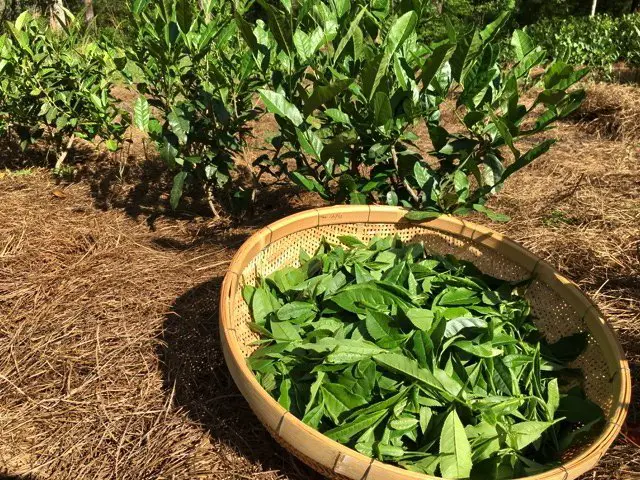
Why is it that most trailblazing enterprises are assailed by doubters, skeptics, and naysayers?
If you are thinking about farming the tea plant Camellia sinensis in the United States, then you may know what I’m talking about.
A friend who gardens or another who travels through tea-growing countries may receive your tea interests with puzzled disbelief, if not outright dismissal.
“You can’t grow tea in the US!” they hiss.
As an experienced tea grower and tea maker, I’ve encountered this reaction many times. Such skepticism can quickly deflate one’s inner tea farmer.
The trouble with the doubters is not just the discouragement but the absence of facts to support their positions.
Table of Contents
- You Can Grow Tea in the US
- Myth #1: If it was easy to grow tea then everyone would do it
- Myth #2: It’s too cold to grow tea in the US
- Myth #3: It’s too hot to grow tea in the US
- Myth #4: No one in the US knows how to grow tea
- Myth #5: American tea growers can’t compete with the famous tea cultures
You Can Grow Tea in the US
Many myths have emerged around the cultivation of tea, especially as it pertains to the US, where there is an ever-growing interest in the ancient craft of tea.
In this post, I aim to refute head-on several prominent myths about tea cultivation.
Each of the myths applies to the continental United States, where, at first glance, the climate and other factors appear to be unfavorable for would-be tea farmers.
But as you will see, the conditions are more amenable to tea than the doubters understand, and the resources available to American tea growers and tea makers as well, are more accessible than ever.
Myth #1: If it was easy to grow tea then everyone would do it
The first myth about growing tea in the US is the most pervasive.
The argument is that because we don’t see lovely hedgerows of tea in every suburban front yard or there are no mega-sized tea farms on prime American farmland, there must be something inherently forbidding about tea cultivation.
First, a general point that needs to be stated: All kinds of farming and gardening are challenging on some level regardless of the crop.
Growing a productive stand of corn is no easy feat, nor is bringing apple trees to bear.
If you have any garden experience, you know how frustrating it can be to keep your plants happy and productive.
The fact that there are entire industries of agriculture consultants offering guidance for hire attests to the supreme difficulties often faced by farmers.
Indeed, if there were no obstacles to success, then there’d be no point in gardening. We’d have everything we needed, served up a la carte from Mother Nature.
The truth about my specific experience with tea farming is as follows.
It has taken many years of effort and quite a few failures to get to where I am with my tea garden. But I started from scratch, with only a limited background in horticulture and no experience at all in tea culture.
I can attest that starting a new farming endeavor is difficult without mentors and traditions to lean upon.
But in just ten years since I started the tea project, starting a tea garden is now easier than ever. If I can do it with my limited resources, then just about anyone can do it in much less time because the knowledge of tea culture is now much more widespread.
Bottom line: Growing tea is not without difficulties, but there’s no valuable undertaking, most especially in agriculture, that is without setbacks. Fortunately, today’s American tea grower has a trove of resources available.
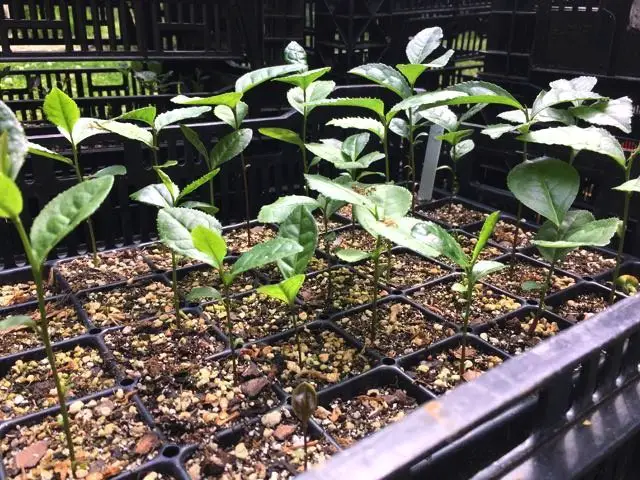
Myth #2: It’s too cold to grow tea in the US
Climatic variation in the continental US is definitely extreme.
For instance, a winter’s day in Detroit could easily be 80°F colder than that same day in Miami, while Wichita and Washington, DC, could have an equivalent contrast.
And it gets worse than that. In Atlanta, you could experience a 30-degree drop in temperature within the same winter’s day!
Certainly, it is objected Camellia sinensis, which originates in subtropical climates, cannot thrive across such extremes of cold.
This myth arises from a misunderstanding about the conditions that tea can tolerate.
On one end of the tolerance range, tea thrives in tropical regions with mild climates. For example, tea gardens are sprouting up all over the tropical paradise of Hawaii.
But tea is much more adaptable than most people realize.
In Japan, where tea is often farmed on mountainsides with frigid winters, growers have cultivated tea varietals that can endure occasional snow and freezing temperatures.
Tea farmers in other temperate regions such as Turkey, Georgia (the nation-state), and South Korea have also nurtured cultivars that can pass relatively unscathed through winter stress.
Moreover, growers in these cooler regions have developed plant-insulating covers and air-circulating fans to protect against hard frost. US tea growers would do well to study these technologies, and progress is already being made in developing cold-tolerant cultivars of tea for US farms.
As more tea farms are started in the US there will be even more tea cultivars to emerge that can cope with freezing temperatures.
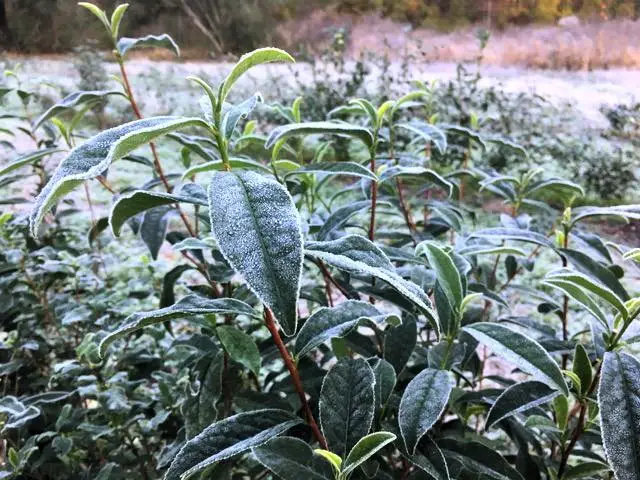
Of course, there are limits to where tea can grow.
I probably would not try tea gardening where the upper six inches or so of the earth freezes hard or where snow sticks to plant foliage for several consecutive days after a storm. Such a limitation tends to occur in USDA plant hardiness zones 6 and lower.
However, season-extending innovations such as high-tunnel hoop houses are now widespread among US farms. Cold refugia such as these may be an option for fearless tea growers willing to experiment with new approaches to growing tea in particularly cold areas, including zones 6 or colder.
Bottom line: Many cultivars of tea camellia are cold-hardy and there is already technology available for mitigating the effects of freezing temperatures. US growers should push the limits on tea’s supposed growing restrictions.
Myth #3: It’s too hot to grow tea in the US
Just as the US cold is extreme, so too is the heat.
Anyone who has spent a summer’s day on the Gulf coast can appreciate how stressful an ordinary 93°F day can be. And if you live in a desert area, it’s not only hot but also very dry.
In my tea garden, located in plant hardiness zone 8b, heat stress can at times be an urgent concern.
For example, I have seen daytime temperatures at or above 95°F induce yellowing of leaves which in turn weakens plant defenses against blights such as anthracnose.
Recent plantings of young seedlings are especially vulnerable to the stresses that come with high temperatures.
So this much is true: throughout much of the US, high heat is no joke.
Fortunately, however, the solutions to high temperatures in the tea garden overlap with those that mitigate the cold.
US tea farmers can deploy temporary, artificial shade during heatwaves. Hoop-house structures for cold protection can be converted to shade houses with fabrics of varying levels of light transmission.
The Japanese already use shade cloths over C. sinensis grown specifically for matcha.
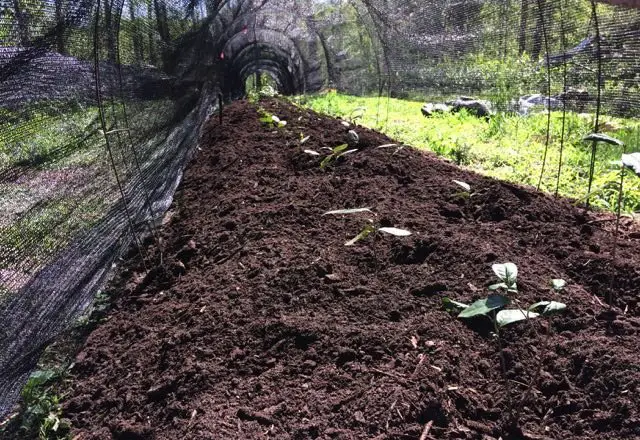
Another solution to high temperatures is to deploy permanent shade. For example, evergreen tree species such as pines can be planted among tea to provide a protective umbrella during both cold and warm seasons.
Though many varieties are deciduous during winter, fruit trees installed amongst tea provide the benefits of both summertime shade and also provide a companion crop.
Irrigation is another obvious necessity in any tea-growing enterprise where heat is a problem. Similarly, irrigation of crops prior to a hard freeze may also reduce cold-induced stress.
And with the impressive performance and affordability of solar-powered water pumps, you can access water in remote farm or garden locations.
Given these technological solutions, would I try to grow tea in a hot desert environment? Probably not.
However, there is more than one empty desert that was converted into an oasis of plant life so it’s worth trying somewhere in the US, just to push the envelope.
Bottom line: If care is taken in the aspects of site selection, choice of cultivar and use of specialized technologies, the impacts of extreme heat and cold on your tea operation can be turned into an overall positive set of circumstances.
Myth #4: No one in the US knows how to grow tea
Perhaps critics will concede that the US has a suitable climate for tea.
Still, there’s neither local knowledge nor the expertise required to actually grow tea on a meaningful scale, so there’s no point in trying, goes the myth.
This myth partly stems from the belief that a plant that yields such a magnificent product—glorious tea in the cup—certainly has to be a supreme challenge for mere mortals to grow.
And there is also no end to marketing noise that promotes the image of C. sinensis as a botanical Holy Grail that only reveals its secrets to a chosen few.
The truth, however, is that tea is not a mystery plant.
The requirements of tea for nutrition, sunlight, and water are similar to most other long-lived tree species, including the closely related flowering camellia grown all over North America.
Give tea camellia plenty of water, healthy soil, and a proper balance of macro and micronutrients; it’ll probably thrive.
In other words, no specialist knowledge is required to grow tea successfully.
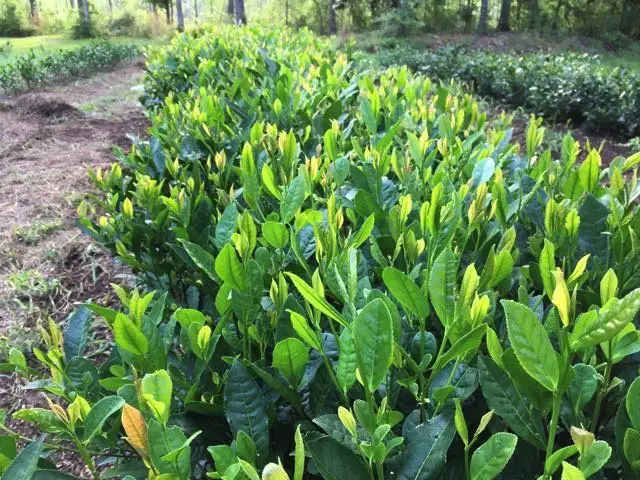
And here’s the state of tea-growing expertise in the US.
The legendary French botanist Andre Michaux first imported tea from China to the Southeastern US in the late 1700s. In the two centuries after Michaux’s contribution, tea from other regions has been imported, cultivated at scale, and made into finished tea.
Since the 1980s, descendants of the original cultivars have been grown commercially at the Charleston Tea Plantation on Wadmalaw Island, South Carolina.
Meanwhile, at a small but intensive tea farm in Fairhope, Alabama, tea man Donnie Barrett has been growing tea camellia for black, oolong, and green tea for nearly twenty years.
And though others are still in the startup phase, there are many small farms across the US that are growing tea, and a few are now offering their tea products for sale online.
Tea experts on the Hawaiian Islands are also sharing their knowledge of the craft with growers on the continent.
Furthermore, this blog is a platform where new tea farmers can share techniques and experiences. Stick around because it’s only going to get better!
Bottom line: There’s no shortage of tea-cultivation specialists in the US, but we do need more tea growers!
Myth #5: American tea growers can’t compete with the famous tea cultures
Tea drinkers have never enjoyed tea products of such wide diversity, high quality, and affordable prices as they do today.
Much of this remarkable growth of the tea market is owing to the expansion of the industry into parts of the world that had no previous experience with tea craft. For instance, early market entry by nations such as India and Sri Lanka put pressure on tea giant China to innovate and open its market.
More recently, countries such as Kenya, Turkey, Vietnam, and many others have pushed the boundaries further.
If not for the many tea pioneers who ignored convention and founded their own distinct tea cultures, our present experience with the revered beverage would not be the same.
US tea growers will one day make a contribution to the market.
However, American producers will not try to compete on any level with the big, established producers. Instead, we might focus on developing our own unique brand, style, tastes, and terroirs.
To forge ahead, tea farm practice in the US will offset operating costs with technologies borrowed from other modes of domestic farm production.
And many small-scale tea growers will play a pivotal role as each share their own novel experiences and techniques with other tea farmers.
By getting started now, you can make an important contribution to this grand experiment. Are you ready?
Bottom line: We know how to farm in the US; we will put that knowledge to work in the tea fields.
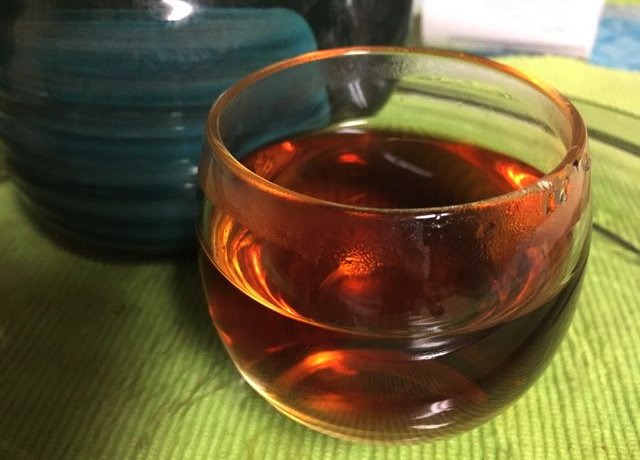
Mike grows and crafts tea in North Florida, USA. He has advanced degrees in biology, and has undertaken coursework in manufacturing Camellia sinensis teas. Mike is a member of the US League of Tea Growers (USLTG) and has presented invited talks on tea growing. Send him a note through our Contact Page if you'd like to talk about tea.
Thank you for sharing your knowledge. My family is considering growing tea in Mississippi any additional information would be helpful.
Start here, Joe:
Welcome to Leaf House Tea